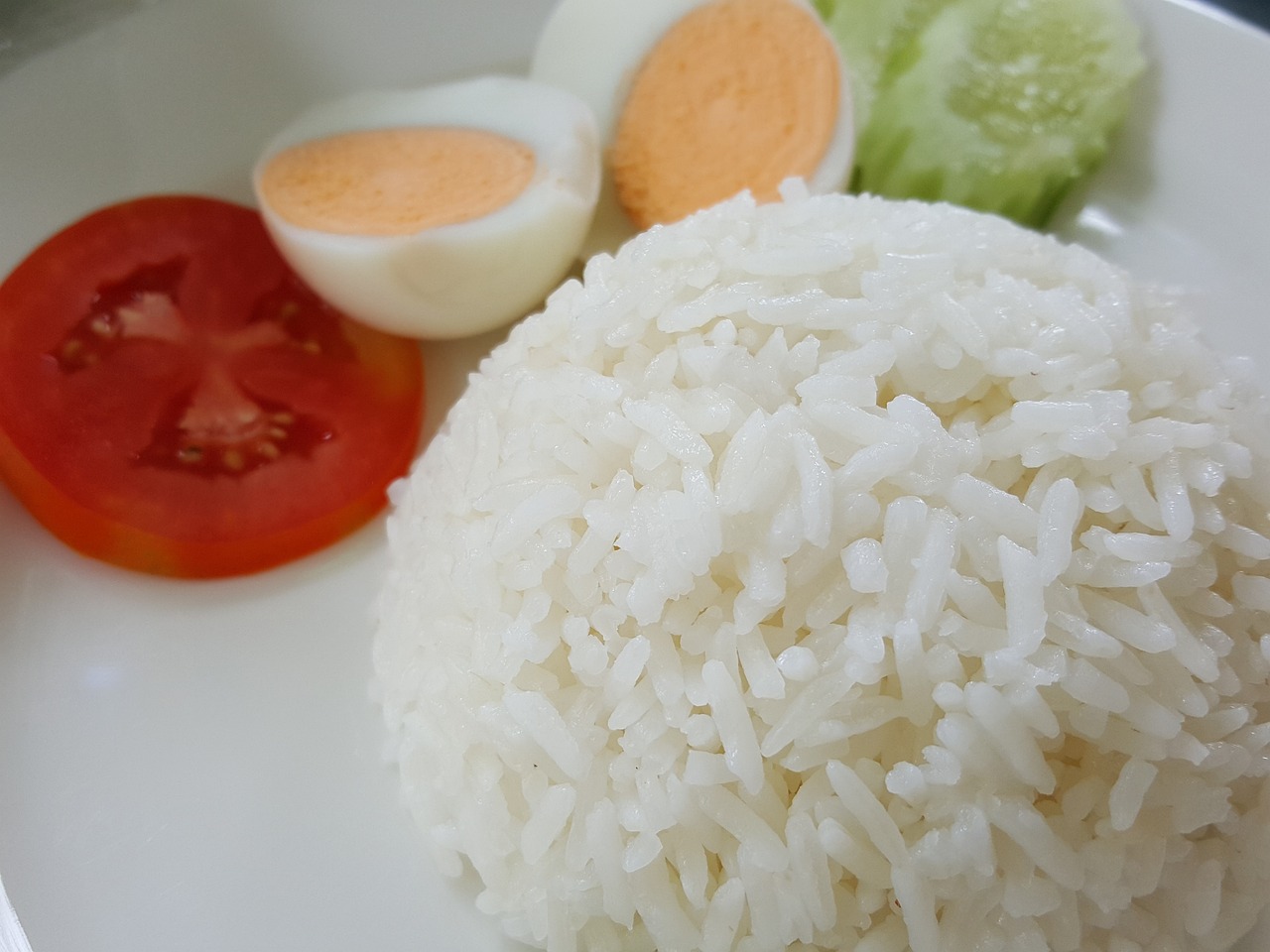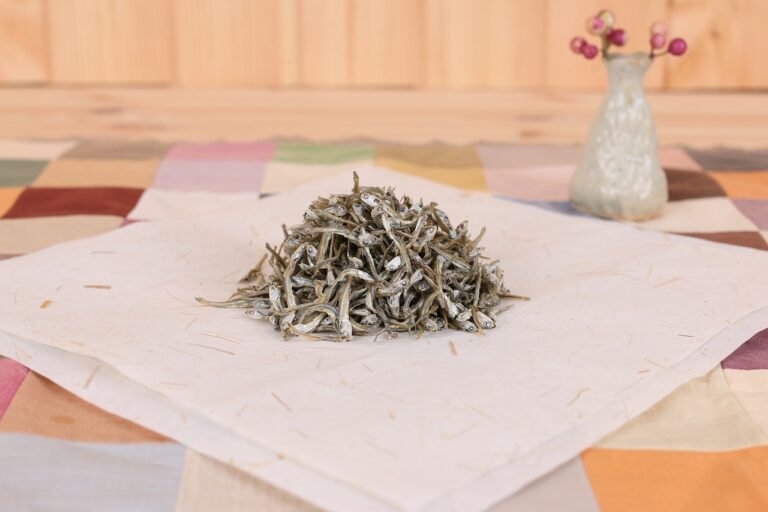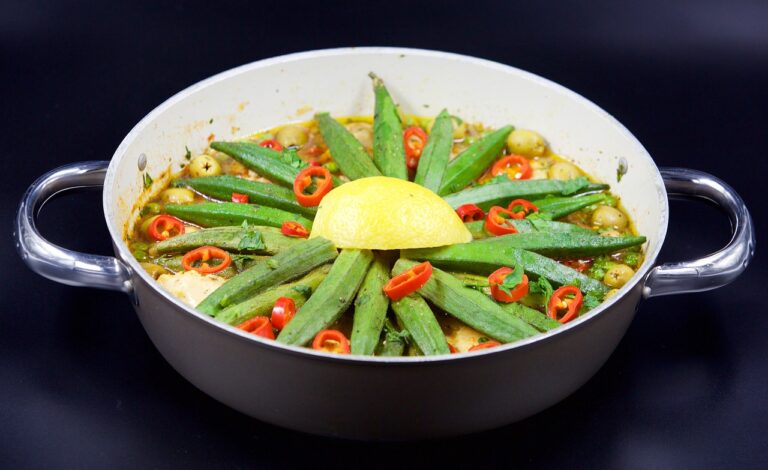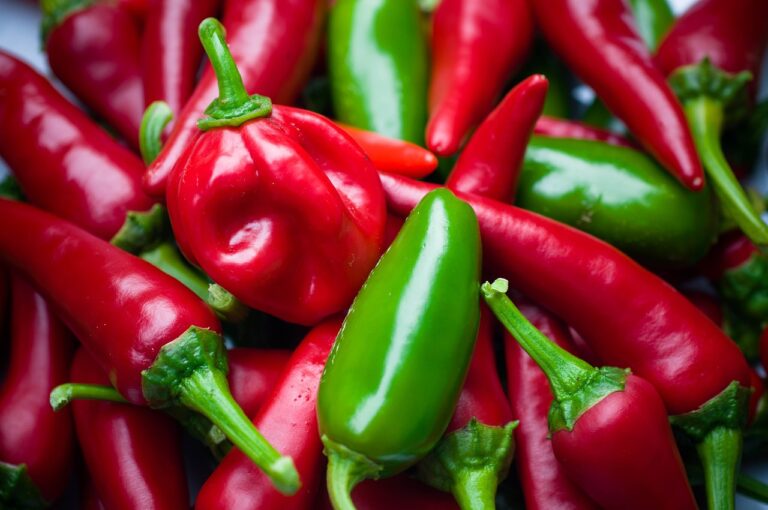10 Interesting Reasons Why You Are Craving Rice

Rice is a staple in numerous cultures and is consumed by billions worldwide. It provides essential nutrients and is often associated with comfort and satiety. However, there are times when we might find ourselves craving rice more than usual. Understanding these cravings can offer insight into our body’s needs, cultural influences, and more. Here’s a look at ten reasons why you might find yourself yearning for a bowl of rice.
Why Am I Craving Rice?
1. Nutritional Needs
Our bodies are intuitive, often signaling what they need through cravings. Rice is a good source of energy, providing essential carbohydrates that the body uses as its primary fuel source.
When we engage in physical activities or have an energy deficit, our bodies might crave foods that provide a quick source of energy. Rice, being a complex carbohydrate, is a great way to replenish those energy stores, making us feel reenergized and satisfied after consumption.
2. Comfort Food
For many, rice is synonymous with comfort food. It might be the warm, fluffy texture or its ability to complement many dishes, but rice often brings a sense of nostalgia and warmth.
Childhood memories of family meals or specific dishes that were paired with rice can trigger cravings. As adults, during times of stress or emotional upheaval, we may find solace in such comfort foods, reminding us of simpler times or moments of joy.
3. Cultural Significance
Rice holds cultural significance in many societies. Its presence in ceremonies, festivals, and daily rituals might make it more than just a food item.
For those raised in cultures where rice is central to daily life, the mere act of preparing and eating it can evoke a sense of belonging and identity. This cultural tethering might explain the longing for rice, especially if one is away from their native land or traditions.
4. Hormonal Fluctuations
Our hormonal balance can influence our food cravings. Women, especially during certain phases of their menstrual cycle, may experience a heightened desire for carbs like rice.
Carbohydrates help in the production of serotonin, the ‘feel-good’ neurotransmitter. Consuming rice might elevate mood and combat feelings of irritability or sadness that sometimes accompany hormonal fluctuations.
5. Digestive Ease
Rice is often recommended for those with digestive concerns. Its bland nature and absence of gluten make it easy on the stomach.
People with sensitive digestive systems or conditions like Irritable Bowel Syndrome might crave rice as it’s less likely to cause digestive distress. The soft texture and ease of digestion can bring relief, especially when other foods might trigger discomfort.
6. Blood Sugar Regulation
Cravings might also be tied to blood sugar levels. When blood sugar drops, the body seeks foods that can quickly elevate it.
Rice, particularly white rice, can provide a quick boost to blood sugar levels. For those experiencing hypoglycemia or a drop in blood sugar, the body might naturally lean towards craving rice as a way to balance out levels.
7. Sensory Satisfaction
The sensory attributes of rice, from its soft texture to its neutral taste, can be deeply satisfying to some individuals.
The way rice feels in the mouth, its ability to soak up flavors, or its contrast in dishes with spices and sauces can be incredibly appealing. These sensory experiences might trigger cravings, especially if one relishes the tactile and taste sensations associated with rice.
8. Dietary Habits
If rice has been a consistent part of one’s diet, its absence can lead to cravings. Dietary habits formed over years can deeply influence our food choices.
For individuals who consume rice regularly, skipping it for a few meals or days might create a noticeable void, prompting a desire to reintroduce it to satisfy both physical and psychological hunger.
9. Association with Satiety
Rice has a filling quality. Consuming a bowl can lead to feelings of fullness and satisfaction, which the body might seek, especially when hungry.
Cravings can be a signal of hunger, and if the body has learned to associate rice with satiety, it might naturally desire it when seeking to feel full. Over time, this association strengthens, making rice a go-to food when hunger strikes.
10. Versatility in Dishes
The versatility of rice in culinary applications can be a reason for its crave-worthiness. From risottos to pilafs, sushi to biryanis, rice forms the backbone of many delightful dishes.
Having tasted a variety of dishes with rice as a central ingredient, one might crave not just the rice, but the entire culinary experience it offers. This expansive culinary repertoire makes rice a sought-after ingredient, leading to frequent cravings.
Craving Basmati Rice
Craving Basmati rice may stem from its unique, nutty flavor and fragrant aroma, which make it a highly desirable choice for many dishes. Its long, slender grains that perfectly fluff up after cooking can be particularly appealing to those who appreciate fine textures in their meals. This type of rice is also commonly associated with comfort and satiety, providing a fulfilling base for a variety of cuisines.
Moreover, the cultural significance and memories of home-cooked meals may trigger cravings for Basmati rice among individuals from regions where it is a staple food. The versatility of Basmati rice, being suitable for pilafs, biryanis, and other aromatic dishes, adds to its crave-worthy reputation. Lastly, its glycemic index is relatively lower compared to other white rice varieties, which might make it a preferred choice for those mindful of their blood sugar levels.
Craving Boiled Rice
Craving boiled rice can be attributed to its simplicity and the comforting, mild flavor it provides, making it a staple food for many around the globe. Its ease of digestion and the quick energy it offers can be particularly appealing for individuals seeking a straightforward, nourishing meal. Boiled rice serves as a blank canvas, easily pairing with a wide array of dishes, from savory curries to sweet toppings, catering to diverse palates and cravings.
The act of eating boiled rice might evoke feelings of nostalgia or comfort for many, as it is often a key component in family dinners and traditional recipes. For those focusing on a healthier diet, boiled rice can be seen as a better option due to its lack of added fats and oils found in other cooking methods. Additionally, its versatility in culinary applications, from being a side dish to forming the base of a main course, keeps it as a constant craving for many.
Craving Brown Rice
Cravings for brown rice can arise from its recognized health benefits, including being rich in fiber, vitamins, and minerals, which contribute to a feeling of well-being and satiety. Its chewy texture and slightly nutty flavor differentiate it from its white rice counterpart, offering a unique sensory experience that can be particularly satisfying. Brown rice’s ability to keep one feeling full longer due to its high fiber content may also make it a sought-after choice for those trying to manage their weight.
The appeal of brown rice extends to its role in supporting a healthy lifestyle, as it is often recommended in various diet plans for its low glycemic index and ability to aid in digestion. Its environmental sustainability, being less processed than white rice, might also resonate with those who are eco-conscious. Furthermore, incorporating brown rice into meals can offer a comforting sense of wholesomeness and simplicity, appealing to those craving a more natural and unrefined option in their diet.
Craving Chicken And Rice
Craving chicken and rice can be a manifestation of desiring a balanced, protein-rich meal that is both comforting and satisfying. This combination is a classic across many cultures, offering a familiar taste that can evoke feelings of home and warmth. The versatility of chicken and rice dishes, capable of being spiced and flavored in countless ways, ensures a never-ending appeal to a broad range of taste preferences.
The nutritional balance provided by this pairing, with protein from chicken and carbohydrates from rice, makes it a fulfilling choice that can energize and satiate without feeling overly heavy. Such cravings may also stem from the meal’s ability to be both simple and elaborate, fitting into everyday dinners as well as special occasions. Lastly, the aromatic spices and herbs often used in chicken and rice recipes can stimulate the senses, making the craving for this dish about more than just hunger—it’s about a sensory experience.
Craving Fried Rice
Craving fried rice often comes from the dish’s delightful combination of flavors and textures, with its slightly crispy rice, vegetables, eggs, and sometimes meat or seafood offering a satisfying complexity. The high level of customization available in fried rice means it can cater to a wide variety of taste preferences, making it a universally appealing dish. The savory and umami-rich flavors, often enhanced with soy sauce, garlic, and onions, trigger a deep-seated appetite for this comfort food.
Additionally, the convenience and speed of preparing fried rice make it a go-to craving for those seeking a quick yet delicious meal. The act of repurposing leftover rice into something new and exciting can also be a fulfilling culinary endeavor, contributing to its crave-worthy status. Furthermore, for many, fried rice is associated with fond memories of family gatherings or favorite restaurants, adding an emotional dimension to the craving.
Craving Jasmine Rice
The craving for Jasmine rice can be attributed to its delicate floral aroma and soft, slightly sticky texture, which makes it an exquisite addition to any meal. Its subtle sweetness pairs exceptionally well with a variety of dishes, from spicy curries to stir-fries, enhancing the overall flavor profile of meals. This type of rice is often associated with comfort and sophistication, appealing to those who seek a gourmet dining experience at home.
Jasmine rice’s ability to absorb flavors well while maintaining its distinct aroma makes it a preferred choice for culinary enthusiasts looking to elevate their dishes. The sensory experience of cooking and eating Jasmine rice, with its enticing fragrance filling the kitchen, can be a significant factor in cravings. Additionally, its association with specific cultural or familial traditions may evoke nostalgia, further intensifying the desire for this particular rice variety.
Craving Noodles And Rice
Craving noodles and rice together may stem from a desire for a hearty, comforting meal that combines different textures and flavors. This combination offers a fulfilling dining experience, with the chewiness of noodles and the softness of rice providing a satisfying contrast. Such cravings might also be driven by the appeal of indulging in two staple carbohydrates at once, catering to those with a robust appetite or a preference for diverse textures in their meals.
The versatility of noodles and rice allows for endless culinary creations, blending various ingredients and sauces to cater to an array of taste preferences. This mix can evoke memories of traditional dishes from Asian cuisines, where combining noodles and rice is not uncommon, appealing to those who crave cultural or nostalgic meals. Additionally, the nutritional content, offering a balance of energy-providing carbohydrates and other nutrients, can make this craving a response to the body’s need for sustenance and comfort.
Craving Rice And Beans
Craving rice and beans might stem from their status as a classic comfort food duo, providing a hearty, nutritious meal that’s both satisfying and familiar. This combination is a staple in many cultures around the world, offering a rich source of protein, fiber, and complex carbohydrates, which can contribute to a feeling of fullness and satisfaction. The variety of ways in which rice and beans can be prepared and seasoned means that they can suit a wide range of taste preferences, adding to their crave-worthy appeal.
The comfort derived from eating rice and beans may also be rooted in their economic value, as they represent an affordable, wholesome meal option that can feed a large number of people. Additionally, the cultural significance of rice and beans in many communities can evoke feelings of nostalgia and belonging, enhancing the craving. Lastly, the simplicity of the dish, combined with its nutritional balance, makes it a desirable choice for those seeking a comforting, no-frills meal.
Craving Rice And Butter
Craving rice and butter could be linked to the simple pleasure of enjoying warm, buttery rice that melts in the mouth, providing a rich, comforting taste. This combination’s appeal lies in its simplicity and the way it can elevate a basic dish into something more indulgent and satisfying. The creamy texture and savory flavor of butter mixed with rice appeal to those looking for a quick comfort food fix.
Such cravings may also be tied to childhood or familial memories, where rice and butter was a staple or a treat in one’s diet, invoking a sense of nostalgia. The nutritional aspects, where the fat from the butter enhances the rice’s flavor and satiety factor, can also play a role in cravings, especially for those seeking energy-dense meals. Furthermore, the versatility of rice and butter, serving as a base for adding other ingredients or enjoying as is, makes it a comforting and customizable craving.
Craving Rice And Soy Sauce
The craving for rice and soy sauce often comes from the desire for a simple yet flavorful meal that combines the soft, neutral taste of rice with the salty, umami richness of soy sauce. This combination is a staple in many Asian cuisines, offering a comforting and familiar taste that many people find irresistible. The ease of preparation and the instant flavor boost that soy sauce provides can make rice suddenly more appealing, especially for those looking for a quick and satisfying meal.
Soy sauce’s ability to enhance the natural flavors of rice without overpowering it is key to its crave-worthy status. For many, this craving might also be rooted in cultural practices or personal memories of family meals, where rice and soy sauce was a common accompaniment. Additionally, the minimalistic nature of this dish, focusing on the quality of its two main ingredients, appeals to those who appreciate the beauty in simplicity and the pleasure of uncomplicated tastes.
Craving Rice Cakes
Craving rice cakes may be driven by their light, crunchy texture and the versatility they offer as a snack or part of a meal. These cravings can also stem from the health-conscious individual’s desire for a low-calorie, gluten-free option that satisfies the need for crunch without the guilt. Rice cakes provide a neutral base that can be topped with a variety of flavors, from sweet to savory, catering to diverse taste preferences and making them a versatile craving.
Additionally, the simplicity and convenience of rice cakes make them an appealing choice for busy individuals seeking a quick, satisfying snack. The texture of rice cakes, which can range from crispy to airy, provides a unique sensory experience that can be particularly craving-inducing. For some, rice cakes might also evoke a sense of nostalgia or represent a dietary staple, further contributing to their crave-worthy appeal.
Craving Rice During Pregnancy
Cravings for rice during pregnancy might be attributed to the body’s increased need for carbohydrates, which provide essential energy for both the mother and the developing fetus. Rice, being easily digestible and gentle on the stomach, can be particularly appealing to pregnant women who may experience nausea or digestive sensitivities. Additionally, the comforting and bland nature of rice makes it a safe and satisfying choice amidst the fluctuating taste preferences and food sensitivities common in pregnancy.
The versatility of rice, allowing it to be incorporated into both sweet and savory dishes, ensures that it can cater to the diverse cravings pregnant women might experience. The psychological aspect of craving familiar and comforting foods during pregnancy can also play a significant role, as rice is often associated with warmth and nourishment. Moreover, rice’s ability to serve as a source of essential nutrients, like B vitamins, which are important during pregnancy, might contribute to these cravings.
Craving Rice Krispies
Craving Rice Krispies can be attributed to their unique, satisfying crunch and the sweet, malty flavor that makes them a delightful snack or breakfast choice. The nostalgia associated with Rice Krispies, whether from childhood breakfasts or homemade treats like Rice Krispies squares, can evoke a comforting sense of familiarity and joy. These cravings might also be driven by the simplicity and quickness of preparing a bowl of Rice Krispies, making it an appealing option for those seeking convenience without compromising on taste.
The textural contrast between the crispy cereal and the potential addition of milk, which softens them slightly, provides a sensory experience that is both enjoyable and crave-worthy. For many, the act of listening to the snap, crackle, and pop sounds as milk is poured over the cereal adds an element of fun and whimsy to the eating experience. Additionally, the versatility of Rice Krispies in recipes, from traditional treats to creative culinary creations, keeps them constantly in the realm of crave-worthy foods.
Craving Rice Pudding
Craving rice pudding is often about more than just hunger; it’s a yearning for a rich, creamy dessert that offers both comfort and satisfaction. This dish’s appeal lies in its smooth texture and the delicate balance of sweetness and spice, typically from cinnamon or vanilla, which can trigger fond memories or a sense of nostalgia. Rice pudding is a versatile dessert that can be enjoyed hot or cold, making it a crave-worthy treat for any season.
The comforting nature of rice pudding, often associated with home-cooked meals and family gatherings, can provide a sense of warmth and security. Its simplicity, being made from basic ingredients like rice, milk, and sugar, adds to its appeal, offering a humble yet deeply satisfying dessert option. Furthermore, the potential for customization, with additions like raisins, nuts, or a dollop of jam, makes rice pudding a delightful craving that caters to a variety of taste preferences.
Craving Rice When Sick
Craving rice when sick can stem from its easy digestibility and gentle nature on the stomach, making it an ideal food choice during times of illness. Rice’s bland flavor can be soothing for those with upset stomachs or decreased appetite, providing a comforting and non-irritating meal option. The ability of rice to serve as a mild base for other bland foods or light broths can also contribute to its crave-worthiness, as it helps to maintain hydration and nourishment without overwhelming the digestive system.
The psychological comfort associated with eating rice, a simple and familiar food, can also play a significant role in cravings during sickness. Its versatility allows for the preparation of meals that are as plain or as flavored as one’s stomach can handle, catering to the fluctuating tastes and tolerances of a sick person. Additionally, rice’s role in traditional home remedies and convalescence diets across various cultures may reinforce its appeal as a go-to food when feeling unwell.
Craving Sticky Rice
Craving sticky rice may be driven by its unique texture and the pleasure derived from its chewy, glutinous consistency, which differs significantly from other types of rice. This craving can also be attributed to the cultural and ceremonial importance of sticky rice in many Asian cuisines, where it is a key component in both savory dishes and sweet desserts. The versatility of sticky rice, able to be enjoyed with hands, dipped in sauces, or wrapped in leaves, adds an element of fun and variety to eating it.
The sensory experience of eating sticky rice, from its tactile pleasure to the way it perfectly complements rich, flavorful toppings and fillings, makes it a particularly crave-worthy food. For some, the craving for sticky rice is linked to memories of special occasions or traditional meals, adding an emotional dimension to the desire. Additionally, the nutritional content of sticky rice, providing a quick source of energy, can make it a satisfying option for those in need of a carbohydrate boost.
Craving White Rice
Craving white rice can stem from its fundamental role as a dietary staple in many cultures, providing a comforting sense of familiarity and simplicity. Its mild flavor and soft, fluffy texture make it an ideal companion to a wide variety of dishes, satisfying a broad spectrum of culinary tastes and preferences. The ease with which white rice can be digested makes it a go-to food for people seeking a gentle, soothing meal, particularly in times of digestive discomfort or illness.
The versatility of white rice, serving as a blank canvas for flavors ranging from the savory and spicy to the sweet and mild, contributes to its widespread appeal. For many, cravings for white rice are tied to its association with home-cooked meals and the comforting routine of shared family dinners. Additionally, the quick energy it provides, due to its high carbohydrate content, can make white rice a desired food for those in need of an energy boost or a simple, unadorned comfort food.
How To Stop Craving For Rice
To stop craving for rice, one can start by incorporating a variety of whole grains into their diet, such as quinoa, barley, or farro, which provide similar satiety but with added nutritional benefits. Diversifying the diet with these alternatives can help reduce dependency on rice by satisfying carbohydrate cravings with healthier options. Increasing the intake of fiber-rich vegetables and legumes can also help fill you up and stabilize blood sugar levels, diminishing the urge for rice.
Mindful eating practices, including paying attention to hunger cues and eating slowly, can help in recognizing true hunger versus craving out of habit or boredom. Finding alternative sources of comfort, such as engaging in physical activity or hobbies, can also reduce the emotional reliance on food for satisfaction. Lastly, ensuring meals are balanced with adequate protein and healthy fats alongside carbohydrates can improve overall satiety, reducing the frequency and intensity of cravings for rice or any specific food.
Conclusion
Craving rice is a multifaceted experience, influenced by physiological, psychological, and cultural factors. Whether it’s a need for energy, a longing for comfort, or a cultural tether, rice holds a special place in many people’s hearts and diets. Recognizing and understanding these cravings can lead to a deeper appreciation of this humble grain and its significance in our lives.






